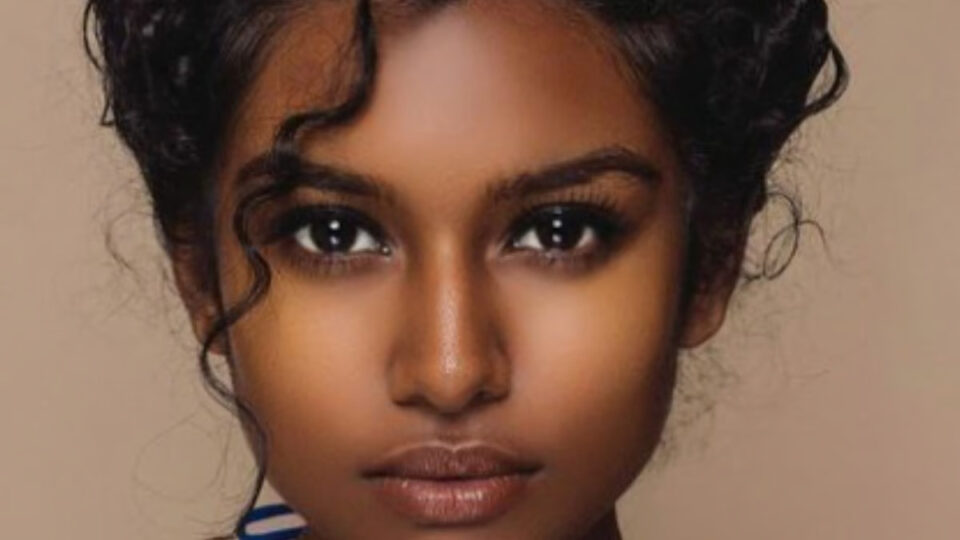Diversity is the essence of beauty. It comes in various forms, shapes, and colors, yet the celebration of certain types of diversity often overshadows others.
In recent years, the spotlight on the beauty of dark Asians has been gradually growing, shedding light on their unique and captivating features. This shift in focus challenges traditional beauty standards and emphasizes the beauty of melanin-rich skin tones within the Asian community.

For far too long, beauty standards have been narrowly defined, favoring fair skin as the epitome of beauty in many cultures. However, the narrative is changing. People are now embracing the spectrum of skin tones that Asians naturally possess.
Dark skin is a beautiful canvas that has long been underrepresented and underappreciated.
READ ALSO: Your Guide to an Effective Brightener for Skin in 2024
Table of Contents
Embracing Dark Asians
The Asian continent is a melting pot of various ethnicities and cultures, each with its unique shades of skin tones. From the warm, golden hues of the Indian subcontinent to the rich, deep tones found in Southeast Asia, the diversity is remarkable.
Dark skin Asians, whether from Sri Lanka, the Philippines, or other regions, possess an inherent radiance that deserves recognition.
In recent years, there has been a reclamation of identity and an assertion of pride in one’s natural skin tone. This shift is not just a personal acceptance of beauty but a societal acknowledgment of the richness and diversity within the Asian community.
Challenges and Triumphs for Dark Skin Asians
Despite the growing acceptance, individuals with darker skin tones face certain challenges.
The beauty industry, for instance, has been slow in catering to the needs of these individuals. Makeup products, especially foundation and concealer shades, were traditionally limited and often failed to accommodate darker skin tones.
However, thanks to a collective demand for inclusivity and representation, several beauty brands have stepped up. They now offer a wider range of shades that celebrate and complement the diverse skin tones of Asians. Products like foundations, concealers, and powders formulated for darker skin tones have become more readily available.
Brands such as Fenty Beauty, Maybelline, and MAC Cosmetics have expanded their shade ranges, offering an array of options that cater to darker complexions.
Skincare and Sun Protection for Dark Skinned Asians
Caring for dark skin involves a specific set of considerations, especially when it comes to skincare.
Darker skin tones are more prone to hyperpigmentation and uneven skin tone due to increased melanin production. As such, incorporating products that address these concerns is essential.
Using sunscreen is crucial for everyone, regardless of skin tone. Dark-skinned individuals might assume they don’t need sun protection due to their natural protection from melanin.
However, sunscreen is vital in preventing sun damage and maintaining healthy skin.
Brands like Neutrogena and Black Girl Sunscreen offer excellent options designed to cater to diverse skin tones.
Additionally, products containing ingredients like niacinamide, vitamin C, and alpha hydroxy acids can help address hyperpigmentation and promote an even skin tone.
Serums, moisturizers, and exfoliants with these ingredients can be beneficial for individuals with darker skin tones.
Cultural Shift and Representation for the Darkskin Asian
The representation of dark skin Asians in media and fashion has also been evolving. More models and actors with darker skin tones are gaining visibility, challenging the narrow standards of beauty and representation.
This shift is not just about aesthetics but also about breaking stereotypes and reshaping societal perceptions.
The beauty of dark-skinned Asians is a celebration of cultural heritage and the mosaic of diversity within the Asian community.
It’s an ode to self-acceptance, empowerment, and inclusivity.
What Asians Are Dark Skinned?
Many Asian populations have naturally “dark skin,” depending on geography, climate, genetic ancestry, and evolutionary adaptation.
There isn’t a sharp line — skin tone among Asians spans a broad spectrum.
But yes — some groups are more likely to have darker skin. Below are some of the main ones, with evidence, plus important caveats.
Who Among Asians Tend to Have Darker Skin
- South Asians
This includes people from India (especially southern India), Sri Lanka, Pakistan, Bangladesh, Nepal.
• Studies show that South Asians often have higher melanin content and larger melanosomes than many East Asians or Europeans.
• Genetic variation plays a role: some alleles (e.g. variants of SLC24A5) associated with lighter skin are less common in certain South Asian populations, meaning darker tones are more frequent. - Southeast Asians
Countries like Malaysia, Indonesia, Thailand, the Philippines, Vietnam and others. Many people here have medium-to-dark brown skin tones. Tropical climates and strong sun exposure contribute to more melanin.
• In coastal or highly equatorial parts, skin tones tend to be darker. - Indigenous / Tribal Groups
Some indigenous or tribal peoples in Asia (for example, groups in southern India, or in the Andaman Islands) are acknowledged to have darker skin. - Melanesian or Papuan-heritage Asians
In regions like Papua, parts of Eastern Indonesia, there are populations with very dark skin tones. Melanesians are often grouped under “Pacific Islanders” rather than typical “Asian” categories, but in a geographical overlap some of those populations extend into Indonesian territory.
Key Caveats & Clarifications
- Wide variation even within countries: For example, within India or Indonesia, people from different regions (north vs south, highlands vs coast, rural vs urban) can have quite different skin tones. Climate, UV exposure, migrations, and mixing with other populations all matter.
- “Dark skin” is relative: What counts as “dark” in one place might be “medium” in another. Skin tones exist on a continuum, not in rigid categories.
- Genetic diversity: Asia is very genetically diverse. Some groups have alleles that produce lighter pigmentation; others have ones that favor darker pigmentation. So the frequency of darker skin varies.
- Social & historical influences: Colorism, migration, colonial history, diet, and lifestyle can influence how skin tone is perceived and even how light/dark it appears (sun exposure, cultural practices, etc.).
Photo Credits: LZ